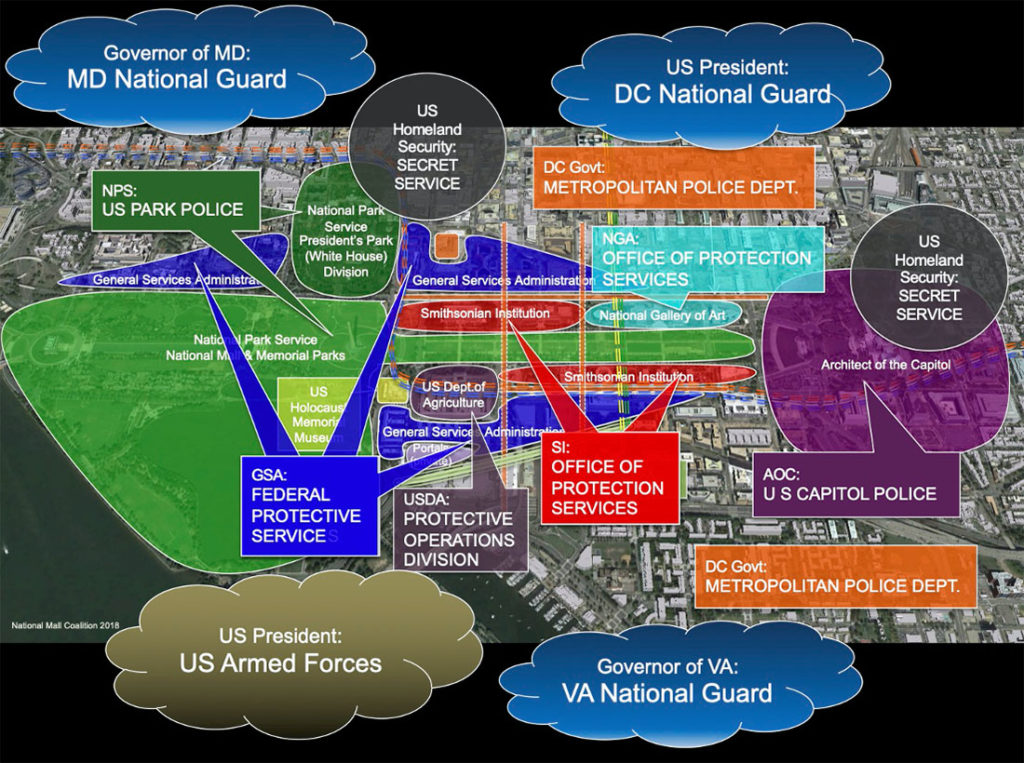Let’s Keep the People in the People’s House
By Judy Scott Feldman
In the wake of the January 6th attacks on the Capitol, the National Mall for the first time in its history is closed to the public for a week to secure it against anticipated Inauguration Day disturbances. No question the security threats are real – to our political leaders, local residents and visitors, the symbolic buildings where the business of government takes place. Each layer of added security, barriers, closures is intended to protect against a repeat. But with each accumulated response, we watch “We the People” lose access to our public buildings, and those buildings and public open spaces take on a mantle of fear. And still new threats arise. How can we face these threats without adding to the problem? How can we even set about conceiving of a way to protect the Capitol and our national monuments from American citizens?
As much as my heart sank as I watched the insurrectionists on January 6th storm the Capitol amid chants to “Stop the Steal,” I rue even more the aftermath of the security failure and what it will mean to our public buildings and the National Mall as our nation’s stage for democracy.
I was born in Washington. I grew up on the hills of Anacostia where from my bedroom I could see the Capitol, the Washington Monument, and other symbols of American Democracy. Our whole neighborhood watched the July 4th fireworks from the clearing at Mr. Kramer’s hilltop overlook. I was thrilled to have my first summer job in the Capitol’s service department despite being confined most of the day to the tunnels and windowless basement rooms. Why? Because on any errand to a senator’s or representative’s office I could detour through the ornate and dignified Statuary Hall and Rotunda teeming with tourists – I was sure they envied me with my proximity to it all. I figure these exhilarating childhood experiences are the reason I became an art historian and student of Washington’s architectural history.
But little by little, and then faster and faster in recent decades, the welcoming shrines I could enter unimpeded as a child and young adult lost their openness. Yes, there were Capitol police to be seen when my dad took me to his workplace in the 1960s to see Congress in session, to walk the majestic yellow halls with their shiny inlaid floors and murals, to marvel at the opulence of the Senate Appropriations Committee chamber. Through the 1970s and 80s visitors and tourists were pretty free to wander the halls of Congress and the Senate and House office buildings.
That all began swiftly to change after the murder of two Capitol Police officers in 1998, and even more drastically after 9/11. The Capitol West Terrace, a favorite place for visitors and locals alike to take in the awesome beauty of the Mall, was closed to the public. Then the east front stairs became off-limits. No more could we enjoy the processional and uplifting act of ascending that grand staircase and passing through the monumental columns to enter the great domed Rotunda. Instead, the new U.S. Capitol Visitors Center forced us underground. We now came into the People’s House through the basement, a darkened hallway, and an elevator. Same at the Library of Congress and the Supreme Court.

A way to confront the problem is to look closely at one underlying impediment to productive, intelligent resolution. In the nation’s capital, unlike every other city across the nation, no one is in charge. The National Mall Coalition created a diagram years ago to illustrate the fact that there are at least eight government agencies with jurisdiction over the Mall’s museums, monuments, public buildings, and open space. We’ve amended that diagram here to help illustrate the challenge on 1/6 and the dumbfounding lack of quick and effective security, with deadly consequences. With so many different security and police forces, with so many layers of divided authorities from the mayor to the President, there is no simple solution, and the result is disaster. Can we start with this basic understanding and find a way to coordinate a solution to what the threats to security are, who will be in charge, and how all the other services will work together to ensure security and public safety – and remove the layering of architectural barriers that threaten the very symbolic meaning and power of our symbols of American Democracy.
• Judy Scott Feldman, PhD, is a founding member and Chair of the National Mall Coalition.
Tags: Mall security
